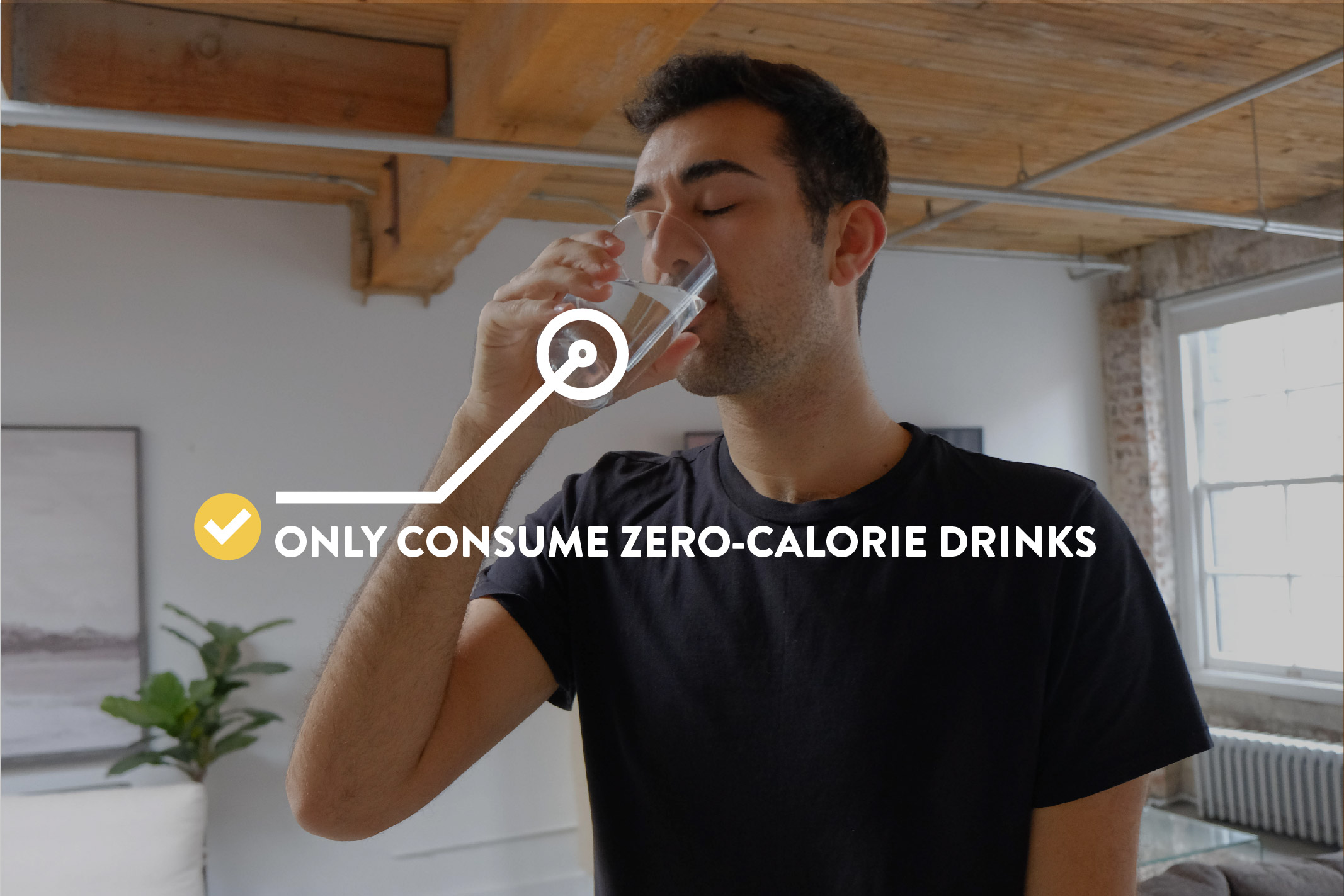
Juice. Soda. Lattes. Milkshakes. Depending on the size of these drinks and what your caloric needs are, the calories consumed for any one of these could be greater than a properly portioned meal! A medium chocolate milkshake can be 750 calories—a hefty allotment of a 2,000 calorie per day budget. Avoiding the extra liquid calories that can add up fast is what this habit is all about.
Finding alternatives
When it comes to the research behind low and no-calorie drinks, it can seem a little tricky to navigate with some conflicting results. But there does appear to be a relatively clear, better, best order of beverages—specifically when addressing calories and weight gain.
Low-calorie drinks like milk alternatives (almond milk for example) are certainly a great starting point and an easy win for a lot of clients. It reduces the number of calories purely by having fewer calories per serving. Unsweetened drinks are particularly good for this. Sweetened almond milk is half the calorie count of 2% milk (from 120 calories per serving down to 60) and drops it to 30 calories if unsweetened.
Artificially-sweetened zero-calorie drinks have received a bit of a bad rap. Some studies have found that the extra perceived sweetness of sweeteners (up to 200x that of normal sugar) trick the brain to desiring more calories. When the brain perceives sweetness it desires more sweetness [1]. Research shows mixed results for long-term weight loss, indicating in some studies weight gain. Use your own professional judgment when suggesting this as a pop alternative, but it could be a temporary step before progressing your client to the next step of their beverage replacement journey.
Unsweetened carbonated water is a good progression away from soda and artificially-sweetened drinks as they have zero calories and don’t use artificial sweeteners. However, there is even some evidence that carbonation can lead to an increased desire to consume calories [2].
So the best bet out of all your beverage choices? Still water. If your clients cannot handle drinking plain water, try suggesting they add fruit, vegetables, and herbs into their water to add natural flavor. There are a lot of suggestions on the web for a variety of flavor combinations to try.
Making alternative beverage options part of your clients’ daily routines
Drinking only zero-calorie beverages is an excellent entry-level habit to build for nutrition. Know your client and work with them to decide whether progressions towards better options over time or directly to plain water will work best for them. Use the habit tracker feature in the Trainerize app. Start small with replacing one beverage type at one meal a day, and build from there. What is also helpful is to spend some time in the Trainerize communication tools, and discuss with your client what their favorite zero-calorie drink is. This will make it more likely for them to follow through if they find their alternative to soda or juice pleasurable.
Drinking only zero-calorie drinks in a nutshell:
- Drinks are a potential source for a lot of added calories.
- Plain water is the best option, although milk alternatives and other water alternatives can be useful.
- Start small and find something your client likes to consume.
References:
- https://www.health.harvard.edu/blog/artificial-sweeteners-sugar-free-but-at-what-cost-201207165030
- Dureen Samandar Eweis, Fida Abed ,Johnny Stiban. Carbon dioxide in carbonated beverages induces ghrelin release and increased food consumption in male rats: Implications on the onset of obesity. Obesity Research & Clinical Practice. Volume 11, Issue 5, September–October 2017, Pages 534-543
